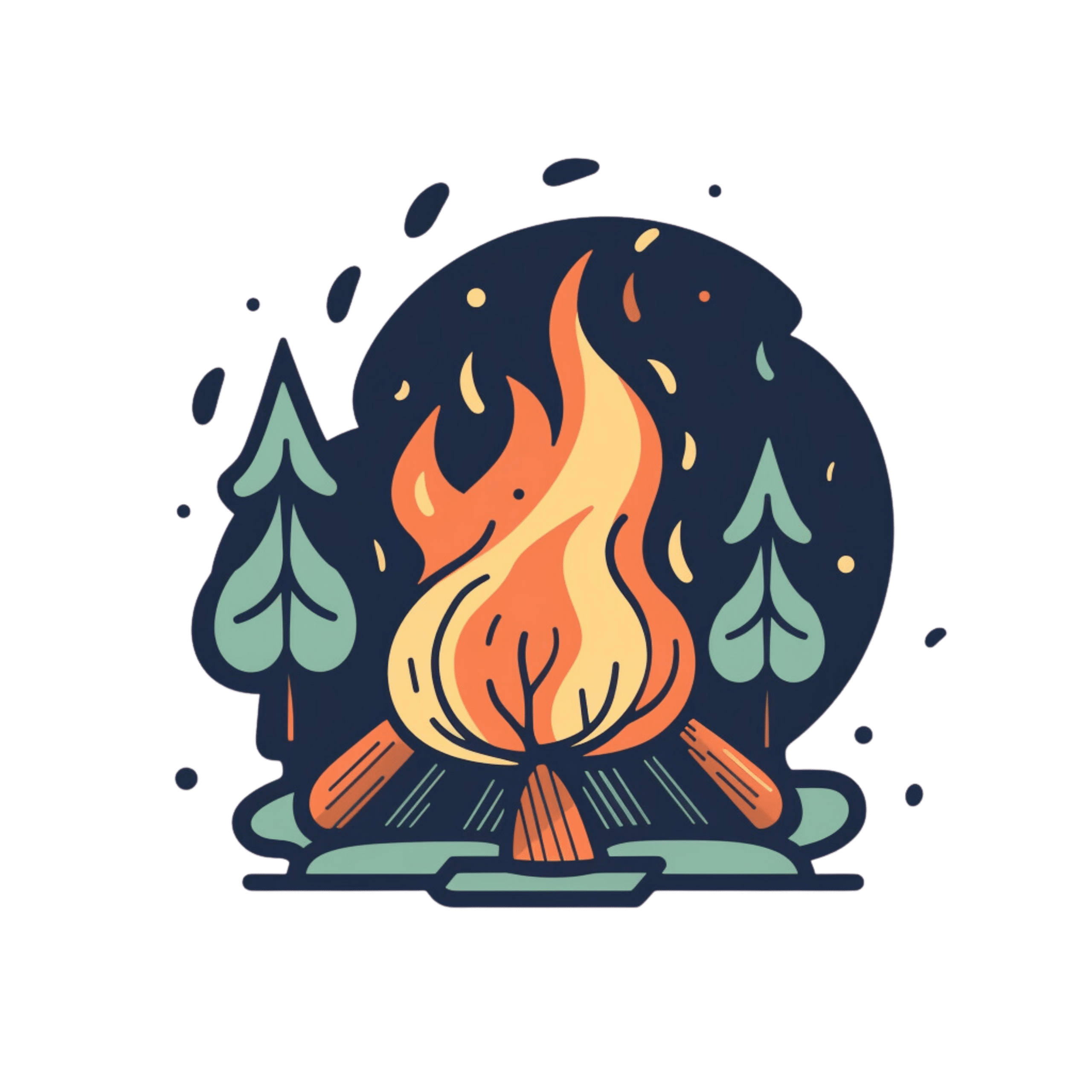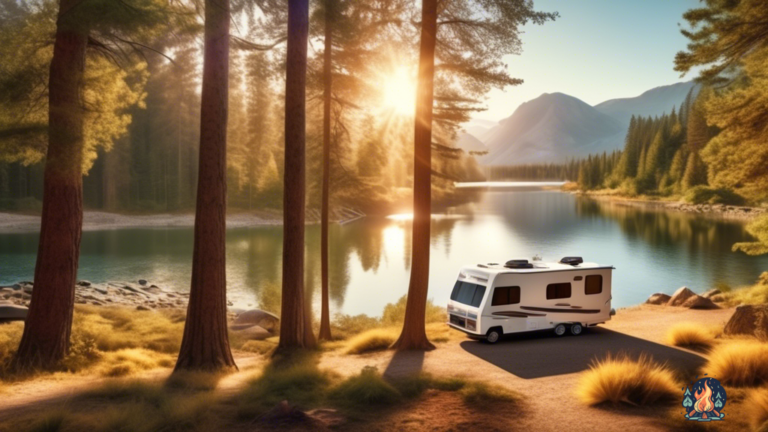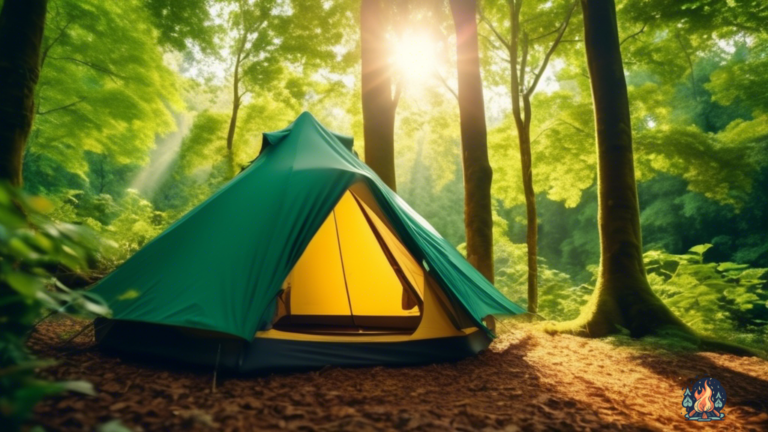Essential Campfire Safety Tips For Outdoor Enthusiasts
by Kevin Fairbanks • Updated: January 21, 2024
Learn the essential campfire safety tips you need for a safe and unforgettable outdoor adventure. Don’t risk it, click now to ensure a memorable trip!

Are you an outdoor enthusiast who loves to gather ’round a crackling campfire, sharing stories and roasting marshmallows under the starry night sky? Well, my friend, while the allure of the campfire may be as irresistible as a siren’s song, it’s important to remember that safety is the key to enjoying this timeless tradition.
So, grab your camping gear and get ready to learn some essential campfire safety tips that will keep you and your fellow adventurers safe and sound in the great outdoors.
Now, imagine this: you’re surrounded by towering trees, the scent of pine filling the air, and you’ve found the perfect spot to set up camp. But before you start channeling your inner pyromaniac, it’s crucial to select a safe campfire location. You don’t want to be the one responsible for accidentally starting a forest fire, do you?
So, look for an area clear of low-hanging branches and dry grass, ensuring that your fiery companion won’t spread beyond control. Remember, a safe campfire location is like finding the perfect partner – it’s all about compatibility and minimizing the risk of disaster.
So, choose wisely, my adventurous friend, and let the campfire tales begin!
Key Takeaways
- Select a safe campfire location away from low-hanging branches and dry grass.
- Gather dry and not too rotten firewood, avoiding excessive bark.
- Build and maintain the campfire in a suitable location away from flammable materials.
- Extinguish the fire completely with water before leaving the campsite.
Selecting a Safe Campfire Location
When choosing a safe campfire location, it’s important to remember that just like a delicate flower needs the perfect spot to bloom, a campfire needs a suitable spot to ignite without any potential hazards nearby. So, before you start tossing those marshmallows into the flames, take a good look around and make sure you’re not setting up camp in a dry field of hay or right next to a stack of firecrackers. Trust me, you don’t want your campfire turning into a fireball extravaganza.
Now, I know what you’re thinking. "But, oh wise campfire guru, how do I find this magical campfire spot?" Well, my friend, fear not! Simply keep an eye out for any low-hanging branches that could easily catch fire and turn your cozy campsite into a blazing inferno. And while you’re at it, steer clear of any tents, picnic tables, or unsuspecting campers who might not appreciate a sudden shower of sparks. Remember, a safe campfire location is like finding the perfect pair of hiking boots – it’s all about comfort and protection.
So choose wisely, my fellow outdoor enthusiasts, and may your campfires be merry and hazard-free!
Gathering and Preparing Firewood
To ensure a successful and enjoyable camping experience, it’s crucial to gather and prepare firewood properly. After all, what’s a campfire without the crackling sound of burning wood and the mesmerizing dance of flames?
So, here are a few tips to help you become the ultimate firewood gatherer:
- Look for fallen branches and dead trees: Mother Nature has a way of providing us with everything we need, including firewood. Keep an eye out for fallen branches and dead trees that are already on the ground. They make for excellent fuel for your campfire. Just make sure they’re dry and not too rotten, or you’ll end up with a smoky mess instead of a cozy fire.
- Size matters: When gathering firewood, remember that size matters. You don’t want to be lugging around massive logs that even Hercules would struggle with. Opt for smaller branches and logs that you can easily carry and break into manageable pieces. Trust me, your back will thank you later.
- Don’t be a bark hoarder: While it may be tempting to gather every piece of bark you come across, resist the urge to be a bark hoarder. Sure, it’s great for kindling, but excessive bark can create a fire that’s more smoky than fiery. So, collect a reasonable amount of bark and leave the rest for nature to take care of. Your fellow campers will appreciate it, and you’ll avoid being known as the "Bark Bandit."
Remember, gathering and preparing firewood is not just about fueling your campfire; it’s an art form. So, channel your inner lumberjack, embrace the challenge, and create a fire that will warm your soul and roast your marshmallows to perfection.
Happy firewood hunting!
Building and Maintaining a Proper Campfire
Always remember, no campfire is complete without a blazing inferno that can be seen from outer space! But before you start piling on the logs and lighting up, let’s talk about building and maintaining a proper campfire.
First things first, you’ll need to choose a suitable location for your campfire. Look for an open area away from trees, bushes, and any flammable materials. We don’t want any unintended forest fires, do we? Once you’ve found the perfect spot, clear away any debris and dig a small pit for the fire. This will help contain the flames and prevent them from spreading.
Now, it’s time to gather your materials. Start by collecting small, dry twigs and leaves to use as tinder. This will help ignite the fire quickly. Then, gather larger sticks and logs to keep the fire going. Remember, the key is to gradually add larger pieces of wood as the fire grows. Don’t throw a massive log on right away, unless you want to risk smothering the flames.
As your fire starts to burn, make sure to keep a safe distance. You don’t want to be the unwitting victim of a sudden burst of flames. And of course, never leave your campfire unattended. It’s like leaving a toddler alone with a pack of matches – not a good idea!
So, enjoy your campfire, but remember to keep it under control and have a bucket of water or a fire extinguisher nearby, just in case.
Happy camping!
Extinguishing the Fire Safely
Make sure you completely douse the fire with water before leaving the campsite.
I know, I know, you’re thinking "But why, oh wise and all-knowing campfire safety guru?"
Well, my friend, let me enlighten you. You see, a drenched fire is a dead fire. It’s like sending a signal to Mother Nature that says "Hey, we’re done here, no need to worry about me anymore."
Plus, it’s just plain fun to watch the flames sizzle and hiss as the water takes over. It’s like playing firefighter, but without all the danger and sirens.
So grab that bucket or hose, channel your inner superhero, and give that fire a good old-fashioned soaking. Trust me, your future self will thank you for it.
Now, I know what you’re thinking. "But what if I don’t have any water? Can’t I just use dirt or sand?"
Oh, my naive friend, you underestimate the power of water. You see, dirt and sand may smother the flames, but they won’t do the job as effectively as good ol’ H2O.
Water is like the superhero of fire extinguishing, swooping in to save the day with its magical extinguishing powers.
So, if you’re ever in a bind and find yourself without water, just remember the wise words of your campfire safety sage: "Water is king, my friend. Water is king."
And with that, you’ll be well on your way to becoming a campfire safety superhero yourself.
Practicing Leave No Trace Principles
By practicing Leave No Trace principles, outdoor lovers can ensure they leave the wilderness just as untouched as they found it.
So, you’ve roasted your marshmallows, shared a few spooky ghost stories, and now it’s time to pack up and head home. But before you leave, make sure you follow these simple rules to minimize your impact on the environment and keep the wilderness pristine for future adventurers:
- Pack it in, pack it out: Don’t be that person who leaves behind a trail of empty chip bags and soda cans. Whatever you bring with you, make sure you take it back home. Remember, your garbage doesn’t magically disappear when you leave the campsite.
- Respect wildlife: The cute little squirrels and curious raccoons might be tempting to feed, but resist the urge. Feeding wildlife disrupts their natural behavior and can lead to dependency on humans. Plus, no one wants to deal with a gang of aggressive chipmunks.
- Stay on the trail: It can be tempting to venture off the beaten path and explore uncharted territory, but doing so can damage fragile ecosystems and disturb wildlife habitats. Stick to designated trails and follow the signs. Trust me, the wilderness won’t be offended if you don’t blaze a new trail.
By following these Leave No Trace principles, you can enjoy the great outdoors while minimizing your impact on the environment.
So go ahead, pitch your tent, light your campfire, and have a blast. Just remember, leave only footprints and take only memories (and maybe a few mosquito bites).
Frequently Asked Questions
Can I use any type of wood for my campfire?
Sure, you can use any type of wood for your campfire… if you want it to turn into a sizzling disaster! Stick to dry hardwoods like oak or maple for a safe and enjoyable blaze.
How far away should my campfire be from my tent?
You don’t want your tent to turn into a toasted marshmallow, do you? So, make sure to keep your campfire at least 15 feet away from your tent for a cozy night’s sleep. Sweet dreams!
What should I do if the wind suddenly picks up while I have a campfire going?
If the wind suddenly picks up while you have a campfire going, don’t panic, my friend! First, make sure your fire is contained and secure. Then, shield it with rocks or a windbreak to keep those flames from going wild. Safety first, adventurer!
Is it safe to cook food directly over the flames of a campfire?
Absolutely! Cooking food directly over the flames of a campfire is not only safe, but it adds that delicious smoky flavor. Just make sure to use proper cooking utensils and keep a close eye on your grub. Enjoy!
How can I safely dispose of the ashes and debris from my campfire?
To safely dispose of campfire ashes and debris, buddy, make sure they’re completely extinguished. Douse ’em with water, stir ’em up, and repeat until they’re as wet as your friend who fell in the lake!

Hi, I’m Kevin, a lifelong camping enthusiast and the voice behind Campfire Discoveries. From tent to RV to cabin camping, I’ve explored it all. Join me as we share stories and tips around the campfire, deepening our connection with the great outdoors.
Keep Reading
-
Choosing The Perfect RV Campsite: Tips For Beginners
Ready to find your dream RV campsite? Learn expert tips for choosing the perfect spot and make unforgettable memories on your next adventure. Click here for the best RV campsite selection advice!
-
Relax And Rejuvenate: RV Resorts With Luxurious Spas
Pamper yourself on your RV getaway with these top-notch resorts featuring luxurious spas. Discover where to relax and rejuvenate, and start planning your ultimate spa retreat today!
-
Best Tent For Camping: A Comprehensive Guide
Looking for the best tent for camping? Look no further! Explore our comprehensive guide to find the perfect shelter for your outdoor adventures. Get ready to elevate your camping experience now!



